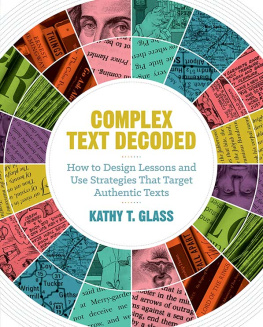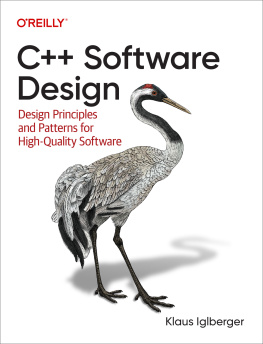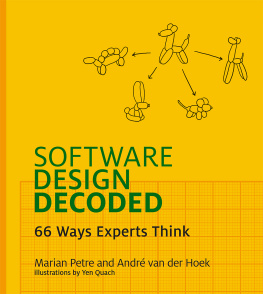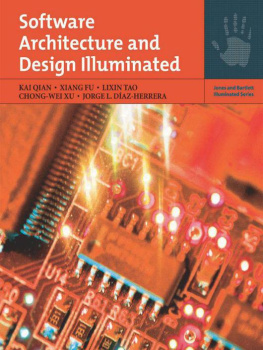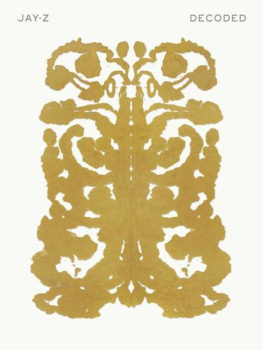Petre MarianHoek André van derQuach Yen - Software Design Decoded
Here you can read online Petre MarianHoek André van derQuach Yen - Software Design Decoded full text of the book (entire story) in english for free. Download pdf and epub, get meaning, cover and reviews about this ebook. publisher: MIT Press, genre: Computer. Description of the work, (preface) as well as reviews are available. Best literature library LitArk.com created for fans of good reading and offers a wide selection of genres:
Romance novel
Science fiction
Adventure
Detective
Science
History
Home and family
Prose
Art
Politics
Computer
Non-fiction
Religion
Business
Children
Humor
Choose a favorite category and find really read worthwhile books. Enjoy immersion in the world of imagination, feel the emotions of the characters or learn something new for yourself, make an fascinating discovery.

- Book:Software Design Decoded
- Author:
- Publisher:MIT Press
- Genre:
- Rating:3 / 5
- Favourites:Add to favourites
- Your mark:
- 60
- 1
- 2
- 3
- 4
- 5
Software Design Decoded: summary, description and annotation
We offer to read an annotation, description, summary or preface (depends on what the author of the book "Software Design Decoded" wrote himself). If you haven't found the necessary information about the book — write in the comments, we will try to find it.
Software Design Decoded — read online for free the complete book (whole text) full work
Below is the text of the book, divided by pages. System saving the place of the last page read, allows you to conveniently read the book "Software Design Decoded" online for free, without having to search again every time where you left off. Put a bookmark, and you can go to the page where you finished reading at any time.
Font size:
Interval:
Bookmark:
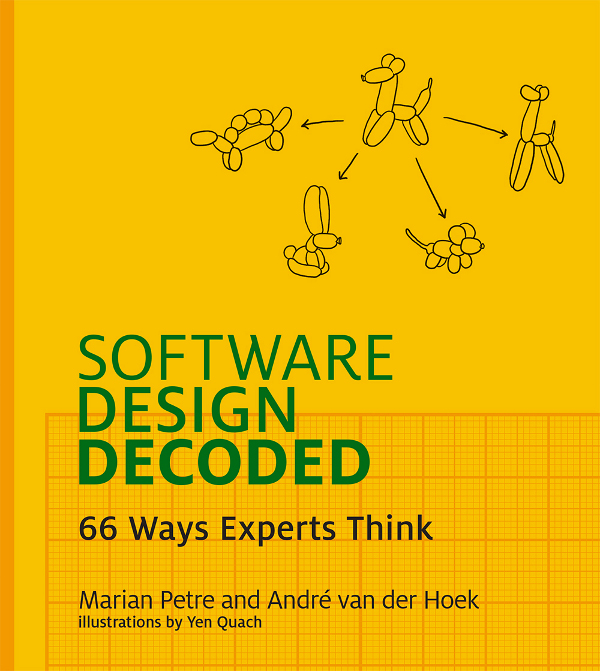
SOFTWARE DESIGN DECODED
2016 Massachusetts Institute of Technology
Illustrations Yen Quach
All rights reserved. No part of this book may be reproduced in any form by any electronic or mechanical means (including photocopying, recording, or information storage and retrieval) without permission in writing from the publisher.
This book was set in Milo by the MIT Press. Printed and bound in the United States of America.
Library of Congress Cataloging-in-Publication Data
Names: Petre, Marian, 1959 author. | Hoek, Andr van der, 1971 author. | Quach, Yen, 1992 author.
Title: Software design decoded : 66 ways experts think / Marian Petre, Andr van der Hoek, and Yen Quach.
Description: Cambridge, MA : The MIT Press, [2016]
Identifiers: LCCN 2016008329 | ISBN 9780262035187 (hardcover : alk. paper)
Subjects: LCSH: Computer software--Human factors--Popular works. | Computer software--Development--Popular works.
Classification: LCC QA76.76.H85 P48 2016 | DDC 005.1--dc23 LC record available at https://lccn.loc.gov/2016008329
10 9 8 7 6 5 4 3 2 1
For more information and background about the book, as well as additional insights contributed by the community, see https://mitpress.mit.edu/software-design-decoded
What makes an expert software designer? The typical answerexperience and innate abilityis less than satisfying. While it carries elements of truth, it offers little from which we can learn and generalize. Experts clearly do not just approach their work randomly. Quite the contrary, they have specific habits, learned practices, and observed principles that they employ deliberately during their design work.
This book offers a look at those habits, practices, and principles, one rooted in many years of studying professional software designers and their ways of working. It offers 66 things that expert software designers do, each of which can be traced back to academic literature that documents expert behavior and each of which has been confirmed to us time and again by those working in the field.
Some may be familiar, others not. Some are easily put in practice, others not. Some have immediate impact, others not. A constant, however, is that expert software designers are keenly aware of all of these practices and draw on them when the situation calls for it.
Today, software is no longer limited by technology, but rather by imagination. Yet the software that turns the imagined into reality can be complex, and the context in which this transformation must happen can be even more complex. This places extraordinary demands on software designers, demands that can be met only if we collectively step up to achieve sustained excellence in design.
We hope this book plays its part.
This book would not have been possible without the many software designers we have been able to study, observe, interview, and simply talk to over the years. We appreciate your generosity, and hope that you might still be able to find a practice or two to adopt. Our sincere gratitude.
In addition, we thank the following individuals for their contributions to the book: Alex Baker, Clive Baldwin, Gerald Bortis, Randi Cohen, Grace Petre Eastty, Max Petre Eastty, Peter Eastty, Thomas Green, Jasper Grimm, Uwe Grimm, Michael Jackson, Christopher Keller, Kimberly Keller, Crista Lopes, Consuelo Lopez, Tamara Lopez, Marie Lufkin Lee, Clara Mancini, Nick Mangano, Lee Martie, Martin Nally, Peter Petre, Edgar Weidema, Greg Wilson.
Trygve Reenskaug (1979). Models - Views - Controllers, Xerox PARC Technical Note, December 10, 1979. Based on Tryvge Reenskaug, THING-MODEL-VIEW-EDITORan Example from a Planning System, Xerox PARC Technical Note, May 12, 1979. Available at http://heim.ifi.uio.no/~trygver/2007/MVC_Originals.pdf [Accessed June 15 2016].
J. M. Carroll and C. Carrithers (1984). Training Wheels in a User Interface. Communications of the ACM 27 (8):800806.
Used by permission, drawing based on photograph from: A. van der Hoek and M. Petre, eds. (2013). Software Designers in Action: A Human-Centric Look at Design Work. CRC Press / Taylor & Francis Group, 452 pages. ISBN 978-1-4665-0109-6.
Based on dog-appropriate switches designed by Clara Mancini. http://www.open.ac.uk?blogs/ACI/.
R.T. Fielding and R.N. Taylor (2002). Principled Design of the Modern Web Architecture. ACM Transactions on Internet Technology 2 (2):407416.
Example provided by Jasper Grimm, based on a notation developed by Jeff Walker: J. Walker (1982). Variations for Numbers Jugglers, Jugglers World 34 (1):1114.
Based on The Wizard of Oz, 1939, Metro-Goldwyn-Mayer.
Used by permission, drawing based on photograph from A. van der Hoek and M. Petre, eds. (2013). Software Designers in Action: A Human-Centric Look at Design Work. CRC Press / Taylor & Francis Group, 452 pp. ISBN 978-1-4665-0109-6.
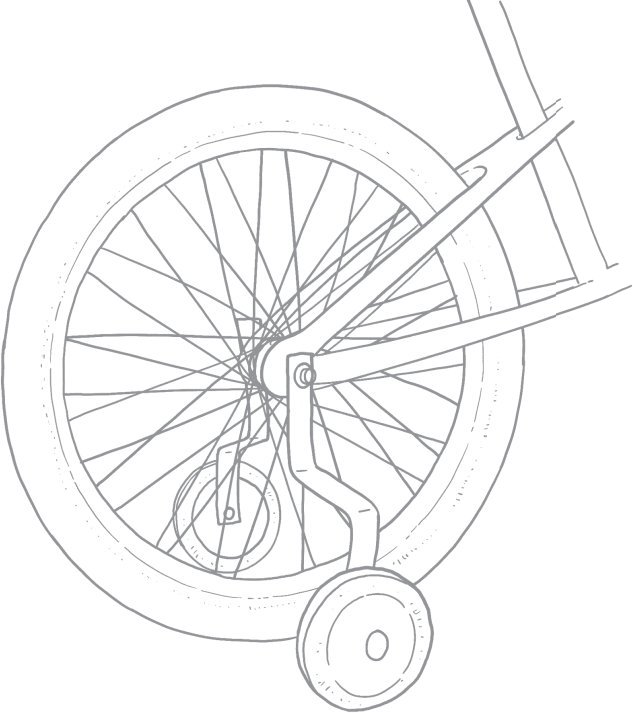
EXPERTS
KEEP IT
SIMPLE

Every design problem has multiple, if not infinite, ways of solving it. Experts strongly prefer simpler solutions over more complex ones, for they know that such solutions are easier to understand and change in the future. Simplicity is so important to them that they often continue to search for simpler solutions even after they have a solution in hand.
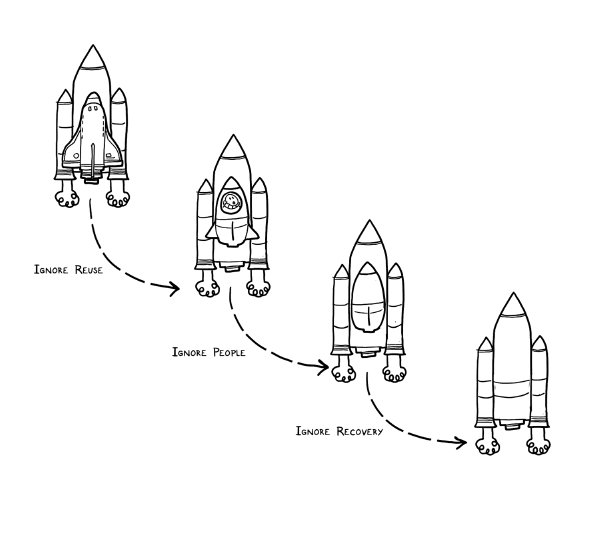
Experts do not try to think about everything at once. When faced with a complex problem, experts often solve a simpler problem first, one that addresses the same core issue in a more straightforward form. In doing so, they can generate candidate solutions that are incomplete, but provide insight for solving the more complex problem that they actually have to solve.
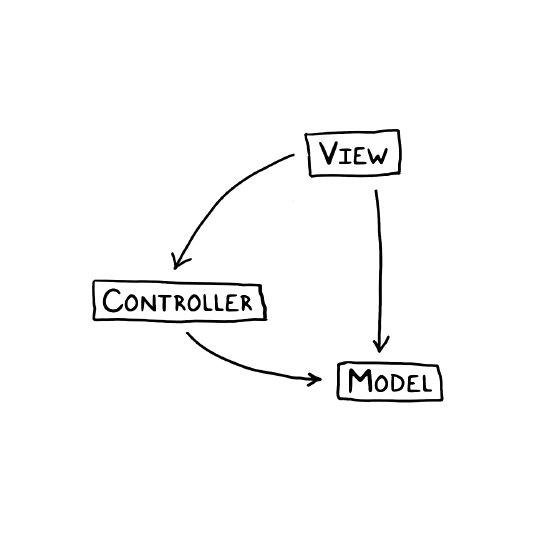
Experts know when and how to break down a complex problem into smaller problems that can be solved independently. In addressing the parts, however, they do not forget about the whole: they reflect on the relationships between parts. When what emerges in solving one part affects other parts, they make adjustments. Indeed, they sometimes repartition the whole problem and solution as a result.
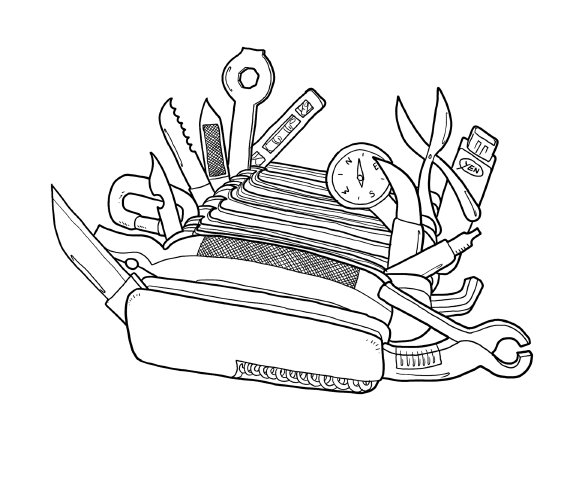
General solutions are preferred over less general solutions, both for the design as a whole and for its constituent parts. Experts, however, avoid overgeneralizing, which constitutes wasted effort and leads to solutions that are more complex than necessary. The balance is important. Experts use what they know about the practical constraints of the design context to decide whether to generalize for reuse or to optimize for the immediate situation.
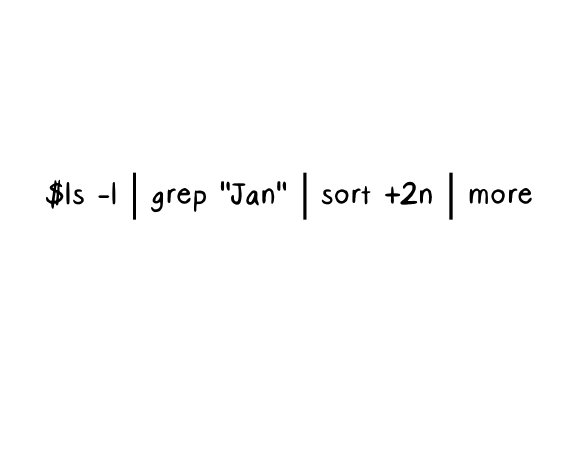
Font size:
Interval:
Bookmark:
Similar books «Software Design Decoded»
Look at similar books to Software Design Decoded. We have selected literature similar in name and meaning in the hope of providing readers with more options to find new, interesting, not yet read works.
Discussion, reviews of the book Software Design Decoded and just readers' own opinions. Leave your comments, write what you think about the work, its meaning or the main characters. Specify what exactly you liked and what you didn't like, and why you think so.

